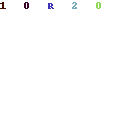| --------------------------------------------------Highly Recommended -------------------------------------------------- Ready, Fire, Aim Is a Must Read for Any Serious Entrepreneur After just 10 minutes with this Wall Street Journal and New York Times bestselling book, you'll know how to: -
Start a business from scratch and make it profitable in less than 2 years... -
Take a developed business that has stalled and get it moving again... -
Keep a growing business growing as annual revenues climb from millions to hundreds of millions of dollars... -
Get other people to do ALL the HARD WORK for you, so you are free to do only the fun stuff... -
Duplicate your winning strategy in several businesses, so you never have to worry about needing any one of them... Putting just a few of these strategies to work could hand you "the best job in the world" -- self-employed multimillionaire. Get all the details -- and a plan for success -- with your own FREE copy of Michael Masterson's Ready, Fire, Aim...
"No idea is so outlandish that it should not be considered with a searching but at the same time steady eye." Winston Churchill "Brain-writing" is not my term. But we're going to make it our own by revising it a little to make it more productive... You brainstorm to get ideas when you have none. Ideally, you do so in a group. So you can feed off each other. So you can legitimize sitting around drinking coffee. So you can get others to do all the hard thinking for you. In all those respects, group brainstorming is a good thing. But what do you do when you're writing sales copy in isolation? Brain-writing is a way to kick ideas around... jumpstart your engine... and get into that "zone" of creativity that you hope to get into in a group session. In fiction circles, there's something similar called "free-writing." USUALLY, it simply means setting a timer, putting pen to page, and letting the ideas pour. Whatever it is, you write it down. You don't stop until your pen runs out of ink or your elbow balloons like a grapefruit. But there are two problems with free-writing when you apply it to writing sales copy: -
First, pens come with a lot of ink these days. Even the dime-store ballpoints could keep you scribbling well past deadline. -
Second, sometimes it's the very prospect of a blank page... the sight of a blinking cursor... and the notion of all that cerebral "freedom"... that's got you stymied in the first place. There is a more efficient way to get started. If you were about to make bricks, would you begin without clay? If you were getting ready to make glass, would you begin without sand? If you wanted to make punch, would you leave out the hooch? Of course not. So why is it that all writers so often try to start conjuring up ideas out of thin air? For all the reasons to get "blocked," this is the easiest to resolve. Before you begin your solo brainstorming session (or a group session, for that matter), get yourself a hefty pile of "stuff" related to the product you're going to write about. Aim for height. An inch is too little. A foot is too high. Somewhere in the middle ought to do it. Next to this, put a fresh stack of index cards... a legal pad... and/or a computer. This is where the "brain-writing" comes in. Start reading. Start taking notes. The process remains "free" in the sense that you shouldn't try to organize ideas at this point. Record them as they come. You'll sort later. However, contrary to popular creativity myths, discipline has a role. For instance: You'll need to keep yourself from focusing too long on any one aspect of your research. You'll need to force yourself to write full-fledged ad copy, rather than just recording notes. And you'll need to make sure, always, that the central promise of your ad is the magnet pulling you through the muck of ideas you'll produce. You should have at least six kinds of things in your "brain-writing" pile before you begin: 1. Competitors' ads. If you're in the direct-mail business, either as a marketer or as a copywriter, you know there's no excuse for not being "seeded" on competing lists. Keep a box of other people's promos by your desk. 2. Samples of the competitors' products. You can probably get comped for competitors' newsletters, as a professional courtesy. But, at least once in a while, go through the subscription process anonymously. You might learn something from the way they do business. 3. Printouts of relevant websites. Yes, printouts. If you'd rather, you can make handwritten notes while scrolling a screen. But avoid the temptation to bookmark links, save pages, or copy and paste text into Word documents. No matter what you think... the only way to really absorb ideas is to re-interpret them for your own notes. 4. Relevant magazines and newspapers. Big media has the budget to gather persuasive stats and anecdotes. Again, copy the information in your own hand. Don't just clip and count on coming back to it later. BUT, make sure you note every source -- both for legal reasons and because you'll get extra credibility with your readers when you cite respected sources. 5. History and non-fiction bestsellers. Sometimes, nothing can be more valuable than going down to your local bookstore to see what your prospective customers are reading. It's an excellent way to put your thumb on the popular zeitgeist. Restrict yourself, however, to buying two books... tops. If you're under any kind of deadline, you won't have time for more than that. 6. Your product manager's "best of." Any good product manager will give you the following items when you start a copywriting project: product-related e-mails, raw testimonials, third-party reviews and endorsements, product-related news clippings, free "giveaways" that come with the offer, notes from past brainstorming meetings, past control packages, tapes or transcripts of conversations with customers, customer service letters, interviews with core people connected with the product, and phone numbers of people you can call to talk to about the product. This is, of course, just a partial list. You could add more. But even with only the above, you should be drowning in new ideas before day's end. (At which point, you'll have a different problem -- more ideas than you can use in one piece! Every copywriter should be so lucky, right? Save the leftovers for a test mailing.) The beauty of this simple approach is that you don't need a soul around to help you make it pay off. In fact, isolation makes it easier. Tip: At some point, you'll make it to the bottom of the pile or you'll feel in your gut that you've got all the key points somehow covered. At that moment, stop and get up. Put on your coat. Go shoot some hoops, take a walk, knit an afghan. While you take that break, your subconscious mind will be mulling over everything you've come across. Absorbing. Sorting. Editing. The next morning, put the pile of stuff in a box and get it out of your sight. Everything happens now inside your notes. Re-read them all. Twice Take the points that stand out and re-write them on a fresh page. Some things will stand out. Others will strike you as complete garbage. Distill and polish. Narrow. If you need to accelerate the process, mail or e-mail the notes to a trusted (and patient) friend to read. If you try this technique and you're STILL stuck for ideas, you might consider buying yourself a push broom. Or running for public office. [Ed. Note: Copywriting is just one skill you can master to help your business grow. Learn the ins and outs of copywriting, marketing, search engine optimization, and more from some of the best experts in the business at ETR's 5 Days in July Internet Business Building Conference. Find out how to reserve your spot right here. And to get John Forde's wisdom and insights into copywriting (and much more), sign up for his free e-letter, Copywriter's Roundtable, at www.copywritersroundtable.com or send an e-mail to signup@jackforde.com. Get a free report about 15 deadly copy mistakes and how to avoid them when you sign up today.] --------------------------------------------------Highly Recommended -------------------------------------------------- Wanted: A Few Good People Ready for Internet Success Walk in to our 5 Days in July Internet Business Building Conference on Tuesday with NOTHING... (no product, website, or technical experience). And walk out Saturday afternoon with your own REAL Internet business... and an income for life. Find out how we'll do it here...
"What a beautiful article by Alex Green. I have a loaded mailbox and almost deleted this. I'm so glad I didn't. This is a thought-provoking article. I'm going to get my kids to read it. "Thank you for adding such value to my day!" Bonnie Pecka
Greene, NY -----------------------------------------------------Highly Recommended ---------------------------------------------------- Why You Don't Need to Be an Author to Have a Bestselling Book A Florida martial arts expert "found" a dusty old book. Then he turned it into estimated sales of over $20,000 in one month. With another book, he's pulled in over $332,250. A 30-something Internet marketer used the same formula to dig up his own bestseller. The little-known art book he found made $19,453 in just 3 weeks. These books weren't first editions. They weren't famous. They weren't wildly popular. Best of all? These hidden treasure troves don't have to cost you a penny. You could unearth the next bestseller. Find out how right here.
Today's Words That Work: "Seed" In direct-mail terms, to "seed" -- means to "plant" your name anonymously on mailing lists -- your own and those of your competitors. By doing that, you not only monitor what's happening with your own mailings, you also stay on top of the offers that others are sending out. Example (as used by John Forde today): "If you're in the direct-mail business, either as a marketer or as a copywriter, you know there's no excuse for not being 'seeded' on competing lists."
We want your feedback! Let us know your thoughts on today's issue. Email us at: AskETR@ETRFeedback.com | 




No comments:
Post a Comment